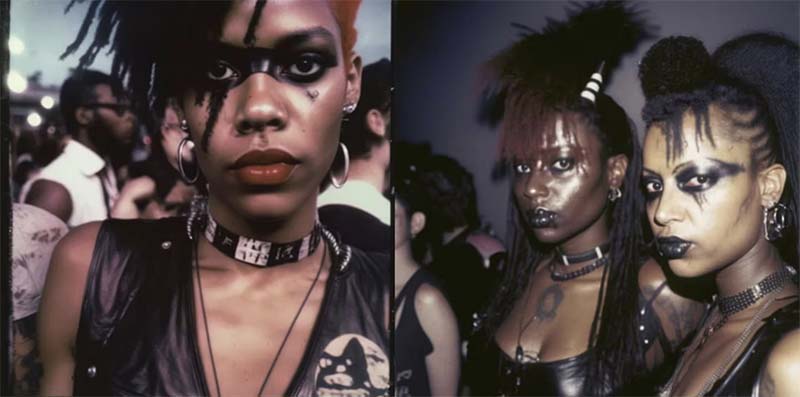
AI-generated photos of Black goth girls created with Midjourney have captivated viewers across social media with both the alluring scenes they depict and their striking realness. In recent years, imaging software bolstered by machine learning have grown uncanny in their ability to produce detailed works based on simple text prompts. With enough coaxing, models like Midjourney, Stable Diffusion, and DALL-E 2 can generate pieces indistinguishable from what a human artist might create.
All it takes to get started is a concept. Text-to-image generators are trained on massive, detailed image datasets, giving them the contextual basis to create from scratch. Instruct any one of today’s popular AI image models to whip up an imaginary scene and, if all goes well, it’ll do just that. By referencing specific styles in the prompt, like a historical art movement or a particular format of photography, the models can be guided toward more refined results. They’re not perfect, though — as casual users hopping on the AI-image meme trend have found, they have a tendency to miss the mark, often hilariously.
That makes it all the more effective when the AI does get it right. Former MMA fighter and artist Fallon Fox’s AI-generated photos, which have gone viral since she posted them on Twitter and Facebook on Nov. 13, at first glance seem a look into the not-so-distant past. Black girls decked in leather and heavy eyeliner smolder in nearly two dozen snapshots from metal shows in the ‘90s. Except, these concerts never existed and neither did these girls. Midjourney conjured them up.
Fox told Screen Rant she was just trying to “show a representation of people like [herself],” a Black woman, in the metal scene through the AI experiment. She had no idea it would take off the way it did. “I put a lot of references to ‘90s-era Black goths in there,” Fox told Screen Rant regarding the AI art creation process. “I also put the scenery in there, which was of course a heavy metal concert, and I told it to use a specific type of film, which was ‘90s Polaroid. And a lot of other tweaks, too.”
It’s easy, at first, to miss the telltale signs of AI-made images in this photoset, though they eventually become glaring. Hands, in particular, have proven difficult for AI models to render, and many of the characters in the series suffer bizarre failings in this area (which Fox and social media users have been quick to point out): rubbery fingers that fuse with other objects, a multitude of tangled extra digits, out-of-place fingernails.
There are other telling details, too, like eyes that are just off and features that seem to be pasted haphazardly on. In one image, a bystander appears to have the entire lower half of his body on backward. Overwhelmingly, though, the people and places in the photos look real.
Source: Screenrant